Innovative Eye Drops for Cataract Treatment: A Review
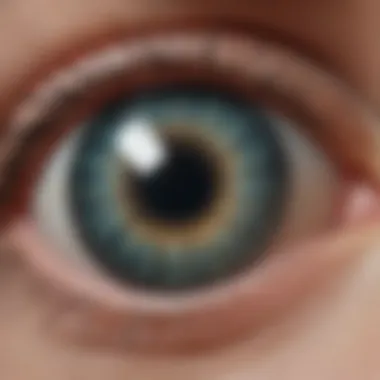
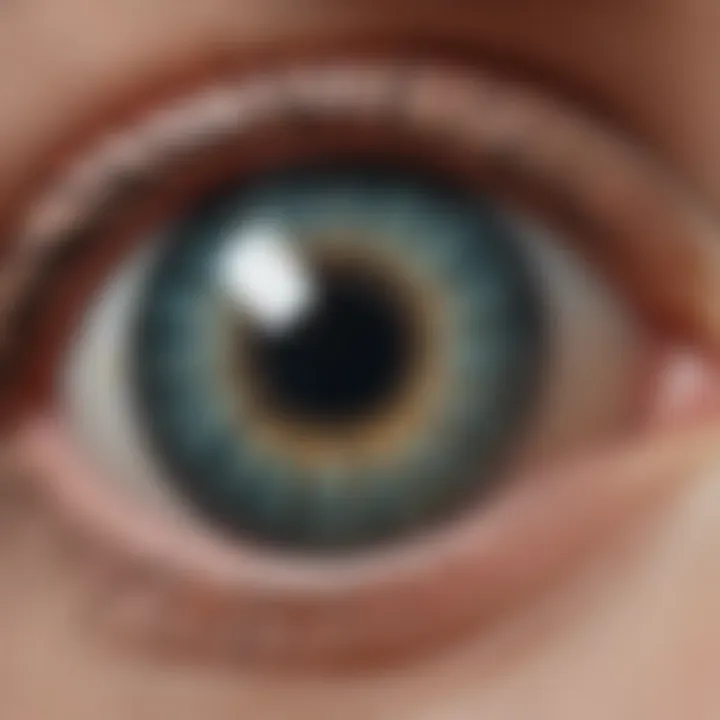
Intro
Cataracts are a significant health issue that affects millions of individuals worldwide, primarily the elderly. Characterized by the clouding of the eye's lens, they lead to blurred vision and, if left untreated, potentially blindness. Conventional treatment typically involves surgical interventions, which may not be feasible for every patient due to age, health conditions, or personal preferences. Therefore, recent advancements in scientific research have piqued interest in alternative treatments, notably eye drops that claim to dissolve cataracts.
This article aims to provide an in-depth analysis of this innovative approach, examining its background, current research, and future implications for eye health.
Overview of Research Topic
Brief Background and Context
The journey towards non-surgical cataract treatment began as researchers explored various biological processes related to cataract formation. Scientific inquiry has revealed that cataracts result from the aggregation of proteins in the eye's lens, creating a barrier to clear vision. This perspective raises intriguing possibilities about how topical treatments could disrupt protein clusters and restore lens clarity.
Importance in Current Scientific Landscape
The potential for eye drops to dissolve cataracts could mark a transformative shift in ophthalmology. With an aging population, the demand for effective and less invasive treatments is on the rise. As such, the concept not only addresses a pressing medical need but also highlights a broader trend in medicine towards patient-centered care methodologies. The impact of these developments could echo across various fields of study, prompting further inquiry into biochemical solutions to other health challenges.
Methodology
Research Design and Approach
To understand the efficacy of cataract-dissolving eye drops, researchers have employed a multi-faceted approach. Most studies investigate the biochemical pathways engaged by these eye drops, typically utilizing both in vitro (lab-based) experiments and in vivo (animal) models. This dual-mode research helps grasp both cellular and systemic responses to the treatments.
Data Collection Techniques
Data collection often involves measuring visual acuity and lens clarity post-treatment. Advanced imaging technologies, such as optical coherence tomography (OCT), are frequently used to monitor changes in lens structure. In addition, patient-reported outcomes play a role, as researchers seek to understand the lived experiences of those using these drops versus traditional methods.
"Should these eye drops prove effective, they might not only redefine cataract care but also elevate the standards of patient treatment across various specialties within healthcare."
In summary, the exploration into eye drops that dissolve cataracts embodies a tapestry of scientific inquiry, ethical considerations, and practical implications that will shape the future of ophthalmology and improve patient care.
Intro to Cataracts
Cataracts present a significant challenge in the realm of ocular health, affecting millions globally. As the lens of the eye becomes cloudy, vision deteriorates progressively. This section serves as a foundation for understanding the various aspects of cataracts, which is essential when diving into the latest innovations in treatment, including eye drops designed to dissolve them.
Definition and Types of Cataracts
A cataract is essentially a clouding of the lens inside the eye, which can lead to blurred vision and, in some instances, blindness if left untreated. There are several types of cataracts, each characterized by their location, causes, and progression:
- Nuclear Cataracts: Typically age-related, these develop in the center of the lens and can cause hazy vision as they progress.
- Cortical Cataracts: These affect the outer edges of the lens and can cause streaks or glare in vision. Often seen in people with diabetes.
- Subcapsular Cataracts: Forming just under the lens capsule, these can develop quickly and are often associated with steroid use or diabetes.
- Congenital Cataracts: Present at birth or developing in childhood, these can arise from genetic factors or intrauterine infections.
Understanding these distinctions is crucial, as the types of cataracts can influence both treatment strategies and research developments, such as the eye drops being studied for their potential to mitigate cataract progression.
Epidemiology of Cataracts
Cataracts are not merely an age-related phenomenon; they pose a broad public health concern. Approximately 24 million Americans aged 40 and older are living with cataracts, according to the National Eye Institute. The prevalence increases significantly with age, with nearly half of all Americans developing cataracts by age 75.
Factors contributing to the incidence of cataracts include:
- Age: The primary risk factor, with more cases appearing as individuals grow older.
- Genetics: A family history of cataracts can escalate risk.
- Environmental Factors: Prolonged exposure to UV light can increase the likelihood of developing cataracts.
- Lifestyle Choices: Smoking and excessive alcohol consumption are associated with a higher risk.
Interestingly, disparities exist among regions and populations, suggesting that socioeconomic factors may influence access to early screening and treatment, resulting in varying outcomes.
Cataracts, therefore, are not just a personal health issue but a societal one, necessitating ongoing research and innovative solutions to effectively address their widespread impact. Understanding the underlying causes and types of cataracts lays the groundwork for evaluating new treatment methodologies, such as the emerging eye drop formulations.
Traditional Cataract Treatments
Understanding traditional cataract treatments is essential as it lays the groundwork for evaluating emerging therapies, like eye drops aimed at dissolving cataracts. Recognizing how cataracts have been managed in the past provides context for current discussions on innovative methods and facilitates informed comparisons. Traditional methods primarily focus on surgical interventions, which have long been regarded as the gold standard in treating this vision-impairing condition. While these interventions have proven effective in restoring clarity, they may come with specific limitations that warrant critical examination.
Surgical Interventions
Surgical intervention for cataracts typically involves cataract surgery, wherein the cloudy lens is removed and often replaced with an artificial intraocular lens. This procedure has evolved significantly over the decades, now performed using minimally invasive techniques such as phacoemulsification. With the aid of advanced tools and technology, surgeons can fragment the cloudy lens into smaller pieces before suctioning it out. This method not only shortens recovery time but also enhances the safety profile compared to earlier techniques.
The advantages of surgical interventions are numerous:
- Effective Vision Restoration: Most patients experience a significant improvement in vision quality post-operation.
- Rapid Recovery: With modern surgery, patients often resume daily activities within days, if not sooner.
- Customization: Surgeons can personalize the procedure with different types of lenses based on individual needs.
However, achieving success doesn’t come without a degree of risk. Let's delve into that.
Limitations of Surgery
While surgical treatments have transformed the landscape for cataract management, they are not without limitations. Here are some critical aspects to consider:
- Surgical Risks: As with any surgery, there are inherent risks, including infection, bleeding, or complications relating to anesthesia.
- Cost Factors: Surgical interventions can be expensive, particularly if complications arise or if premium lenses are chosen.
- Not for Everyone: Certain patients, particularly those with additional eye health issues or overall health concerns, may not be suitable candidates for surgery.
- Patient Anxiety: The prospect of surgery can cause significant anxiety among some patients, which may deter them from seeking necessary treatment.
- Refraction Issues: Even after surgery, some patients may require glasses or contacts for optimal vision.
All these factors together emphasize that while surgical options have their place, it is not always the straightforward choice it appears to be, prompting interest in less intrusive solutions like eye drops that might offer a viable alternative.
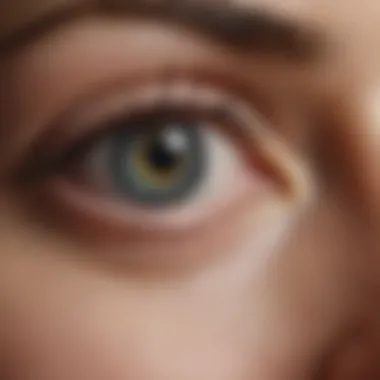
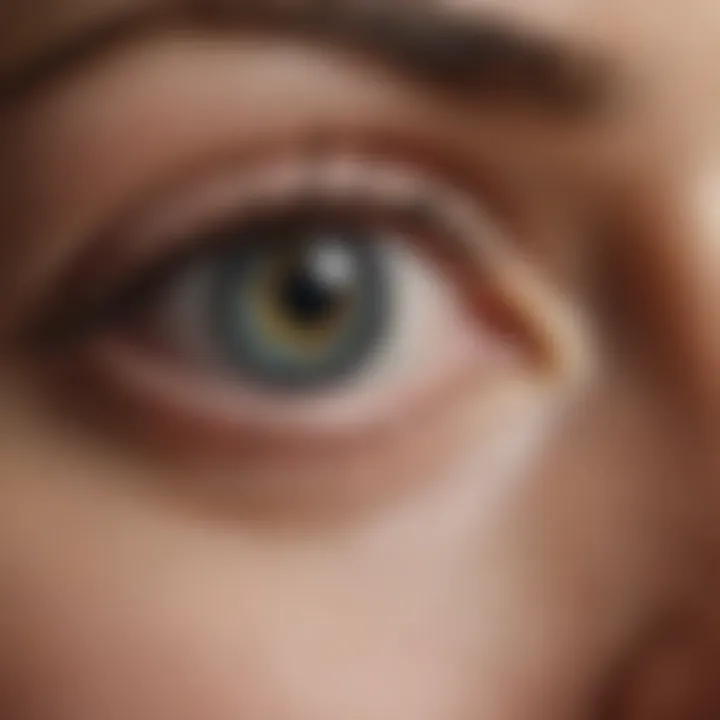
The Science Behind Cataract Formation
Understanding the biological underpinnings of cataract formation is crucial for a variety of reasons. Firstly, it sheds light on why cataracts develop, which informs both prevention strategies and treatment approaches. Additionally, grasping the science behind it allows researchers and healthcare professionals to evaluate new innovations, such as eye drops intended to dissolve cataracts. As the conversation around non-surgical treatments grows, knowledge of the mechanisms involved becomes ever more pertinent.
Biochemical Processes in the Lens
The lens of the eye is a transparent structure composed primarily of water and specialized proteins known as crystallins. These proteins are essential for maintaining lens clarity and refractive properties. However, changes in the environment, such as oxidative stress and aging, can alter these proteins, leading to aggregation. These changes prompt the lens to become opaque, resulting in cataracts.
The biochemical pathway associated with cataract formation often starts at a cellular level. Oxidative damage plays a monumental role; it disrupts the delicate balance of oxidants and antioxidants within the lens. When antioxidant defenses are overwhelmed, the proteins begin to misfold and aggregate. This process could be catalyzed by several factors:
- Age: Natural aging processes reduce the efficacy of antioxidant systems.
- UV radiation: Prolonged exposure can initiate chemical reactions that ultimately lead to protein denaturation.
- Diabetes: Elevated blood sugar levels can alter the lens's biochemical balance, contributing to cataract progression.
Understanding these processes places emphasis on the potential of eye drops, which might be formulated to combat these biochemical changes by targeting protein aggregation directly.
Genetic and Environmental Factors
Rose-tinted conclusions yield that genetics play a significant role in cataract development. Certain genetic predispositions may accelerate the opacity of the lens, highlighting the necessity for family history considerations in clinical assessments. For instance, mutations in genes responsible for maintaining lens homeostasis can result in an early onset of cataracts.
Environmental factors shouldn't be overlooked either. Lifestyle choices such as smoking, dietary habits, and overall sun exposure weigh heavily on the lens's health. A diet rich in antioxidants, like vitamins C and E, might shield against oxidative damage, suggesting a proactive approach in preventing cataracts. Here is a snapshot of influential factors:
- Diet: High antioxidant foods contribute to stronger defense mechanisms.
- Lifestyle: Regular physical activity can enhance metabolic processes, indirectly benefiting lens health.
- Regular Eye Checks: Monitoring changes in vision to track potential cataract development.
"An ounce of prevention is worth a pound of cure." - A well-known saying that rings true in the context of eye health, highlighting that understanding the science helps us to foresee and address cataracts more efficiently.
Research Developments in Eye Drops for Cataracts
The advancement in eye drop formulations targeting cataracts marks a significant shift in ocular health treatments. This topic is essential because it goes beyond traditional surgical methods, offering a non-invasive alternative that could reshape how we manage cataracts. The implications of these developments can tremendously benefit patient care by potentially reducing the need for surgical interventions, leading to lower healthcare costs, improved patient compliance, and ultimately better quality of life.
Overview of Experimental Eye Drops
Experimental eye drops designed to dissolve cataracts have been developed over recent years, fueled by the recognition that surgical solutions might not suit everyone. Unlike surgery, which requires anesthesia and recovery time, these drops provide a more patient-friendly option. Research has focused on various formulations, aiming at both safety and efficacy. For example, one notable study investigated a drop containing a formulation derived from the extract of the Ginkgo biloba tree, which is believed to have properties that could unify the proteins in the lens and prevent opacity. These drops target the molecular changes that lead to cataract formation rather than just the symptoms.
Key Ingredients and Their Functionality
A variety of ingredients in these eye drops have drawn attention. Often, the formulations contain compounds that work biochemically to restore transparency to the lens. Among the more intriguing ingredients are:
- N-acetylcarnosine: This compound is known for its antioxidant properties, which may protect lens proteins from oxidation and help revert the opacity.
- Vitamin C: A well-known antioxidant, Vitamin C can potentially play a role in neutralizing free radicals that contribute to lens clouding.
- Hyaluronic Acid: This ingredient is often used for its moisture-retaining capabilities that can help in improving the overall health of the eye, aiding in comfort and moisture balance while contributing to lens clarity.
These ingredients work in tandem, focusing on both prevention and reversal of cataract progression. However, ongoing research is critical to determine their effectiveness in real-world settings, alongside understanding the precise mechanisms by which each ingredient operates within the existing environments of the eye.
"The evolution of eye drops for cataracts reflects a critical thinking shift in ophthalmology, moving from invasive methods towards potential breakthroughs in pharmacological solutions."
The developments in the field illuminate a promising future, but careful scrutiny of trials and outcomes can significantly shape how these eye drops will integrate into the standard treatment protocols for cataracts. In sum, these eye drops represent a leading edge in research, possibly changing the landscape of cataract treatment altogether.
Mechanisms of Action for Eye Drops
Understanding the mechanisms through which eye drops function to dissolve cataracts is crucial for grasping the potential chemistry behind this fresh approach in ocular care. This is not just a fancy add-on in the realm of treatment; it unravels a core aspect of how effective these drops can be. Knowing these mechanisms helps researchers illuminate the pathways and possibly predict outcomes for patients relying on these novel solutions. The benefits of these drops could extend far beyond traditional surgical interventions, as they aim to tackle cataracts at their root by reversing the biochemical changes causing lens opacity.
Emulsification of Lens Proteins
A significant mechanism at play in cataract management via eye drops is the emulsification of lens proteins. In layman's terms, when cataracts develop, certain proteins in the lens of the eye cause the lens to cloud. This happens because the proteins clump together, losing their normal structure and function.
Eye drops targeting this issue often contain components that effectively break down these clusters of proteins, a process known as emulsification. Typically, substances like catalytic enzymes or specific surfactants serve to disrupt these protein aggregates. By targeting these aggregates, the emulsifying agents seek to restore a balance within the lens environment.
With this approach, one can envision how applying these drops might lead to clearer vision over time. With consistent usage, emulsification may significantly lessen the degree of lens opacification, thus enhancing light transmission.
Here are a few key points regarding emulsification:
- Protein Structure: The normal state of lens proteins is necessary for transparency, which is hindered in cataract formation.
- Mechanism of Action: The emulsifying agents penetrate clumped proteins, breaking them apart into smaller, more manageable fragments.
- Possible Outcomes: Reduced lens opacity results in improved visual acuity, benefiting daily life and activities for patients.
Restoring Lens Clarity
Another critical aspect of the eye drops' action revolves around restoring lens clarity. After the proteins are emulsified, the subsequent step focuses on promoting the lens’s original transparency. Restoring clarity may involve multiple processes, primarily targeting the biochemical pathways that contribute to lens transparency.
The formulation of these drops often includes antioxidants or compounds known to help stabilize the lens structure. These agents work to counteract oxidative stress—the primary foe of lens proteins—by neutralizing free radicals that can otherwise damage cellular environments and worsen opacity.
In practical terms, when the integrity of the lens proteins improves, clarity is promoted, resulting in a more favorable interaction with incoming light. Factors like age and environmental exposures often accelerate the deterioration of lens quality, making this restoration mechanism vital not only for treatment efficacy but also for proactive strategies in eye health.
In summary, keeping lens proteins intact and functional is pivotal. Here’s how restoring lens clarity plays into the broader scope:
- Functional Transparency: Essential for proper vision; clear lenses allow light to pass without obstruction.
- Defensive Mechanisms: Compounds aid in protecting against oxidative damage and maintain structural proteins.
- Long-Term Vision Health: Enabling clearer vision could potentially delay the need for surgical options, among other benefits.
"Eye drops that can dissolve cataracts are promising not just for immediate clarity, but for redefining future parameters of eye health management."
Together, these mechanisms spotlight the value of eye drops as a viable alternative to surgery. It's not just about easing existing conditions; it’s about reshaping what we expect in the management of cataracts. Understanding these mechanisms arms patients, doctors, and researchers alike with the knowledge to better navigate their options in eye care.
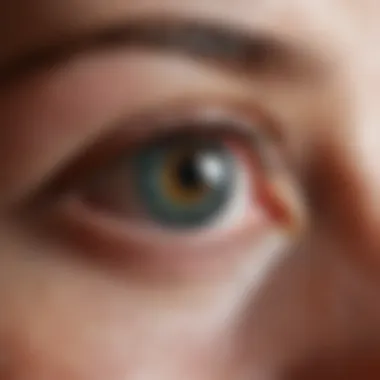
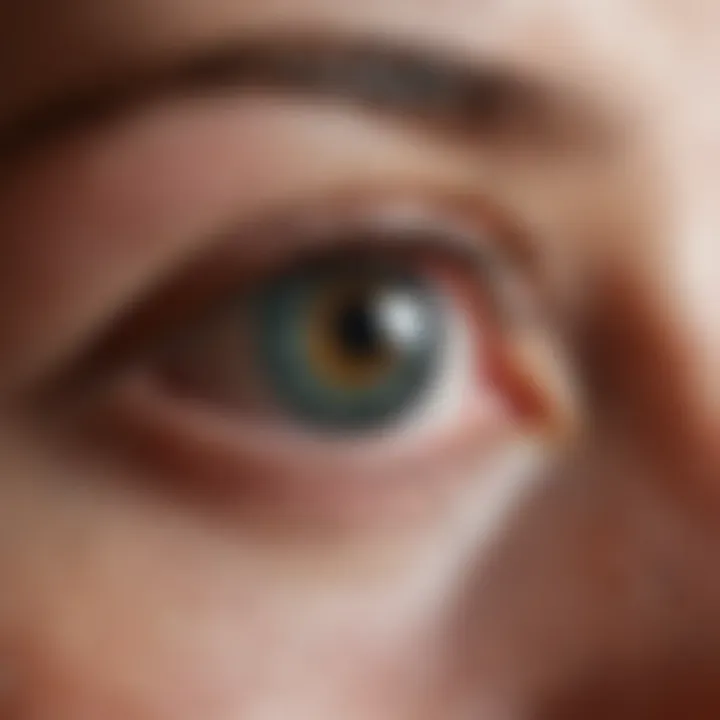
Clinical Trials and Their Findings
Understanding the role of clinical trials in the exploration of new eye drops aimed at dissolving cataracts is paramount. These trials serve as the cornerstone for assessing the safety and effectiveness of novel treatments, laying the groundwork for their eventual approval and application in everyday medical practice. In a field historically dominated by surgical interventions, the promising concept of non-invasive eye drops has sparked considerable interest. The findings from clinical trials can ultimately dictate not just the fate of these eye drops but also shift treatment paradigms within ophthalmology.
Key Studies Conducted
A tapestry of research has emerged in recent years, weaving together various studies that investigate the use of eye drops in cataract treatment. Notably, some trials prioritize identifying the active ingredients that most effectively address lens opacification. For instance:
- The Ginkgo Biloba Study: This clinical trial examined the impact of Ginkgo biloba extract in eye drops. Researchers found a marked improvement in lens clarity among participants over a significant study period.
- Cataract Clear™ Trials: Focused on proprietary formulations combining various antioxidants, these trials assessed their ability to reduce lens cloudiness. Initial results indicated that participants experienced various improvements in visual acuity, albeit with varied outcomes based on individual conditions.
- Innovative Polyblend Trials: This study looked into a blend of emulsifying agents designed to alter protein aggregation in the lens. With a diverse participant pool, the results hinted at a potential breakthrough in non-surgical cataract treatment.
These studies underscore the rigorous approach towards understanding which formulations yield tangible benefits, serving as a gateway for further investigation.
Outcomes and Efficacy Reports
The outcomes of these trials provide vital insights. Many reports highlight that while some eye drops showed promise in small-scale trials, efficacy varies significantly among individuals. Some key findings include the following:
- Short-Term Efficacy: A majority of trials noted transient improvements in lens clarity, particularly in younger populations or those with early-stage cataracts. However, many patients with advanced forms often reported fewer benefits.
- Safety: Most studies reported minor side effects like eye irritation and temporary discomfort, leading to an overall reassuring safety profile for many of the tested drops.
"Clinical trials have illuminated both the potential and limitations inherent in the developing category of eye drops for cataracts. Their findings serve as a crucial link between theoretical benefits and clinical realities."
- Patient Perception: Participating in trials also illuminated patient perspectives. Many found the notion of treating cataracts non-invasively appealing and preferred it over traditional surgery, despite the variations in reported efficacy.
In summary, ongoing clinical trials provide a wealth of information shaping the trajectory of cataract management. The interplay between scientific inquiry and patient experiences is crucial in forcing the discussion surrounding cataracts to evolve, allowing for more options in future treatment methodologies.
Comparative Analysis with Surgical Options
When discussing cataract treatment, it's essential to weigh the emerging options against traditional surgical methods. This comparative analysis sheds light on the evolving landscape of ocular therapies, particularly new eye drops designed to dissolve cataracts. Understanding these comparisons can illuminate not just the clinical implications, but also how patients view these choices.
Cost-Effectiveness of Eye Drops
One of the primary considerations with any medical treatment is the associated costs. Surgical procedures for cataract removal can range from moderate to high expenses, depending on various factors like the surgeon’s fees, facility charges, and postoperative care.
In contrast, eye drops aimed at dissolving cataracts potentially offer a more budget-friendly alternative. Here are a few points worth noting regarding cost-effectiveness:
- Lower up-front costs: Eye drops typically have lower initial costs compared to surgery, which can require significant financial planning for patients.
- Reduced indirect costs: By potentially avoiding surgery, patients might save on transport, time off work, and post-surgical follow-ups.
- Insurance implications: Depending on the regulatory status of eye drops, insurance coverage may impact costs significantly, either covering the drops or not.
Cost does not exist in a vacuum, of course. Effectiveness, side effects, and patient experience must also factor into the equation when evaluating overall value. Would patients feel more at ease using a product they self-administer? Moreover, the potential for eye drops to offer a less invasive approach could make them appealing to those apprehensive about surgery.
Patient Acceptance and Adherence
Patient acceptance is another vital facet of this discussion. How willing and eager people are to adopt a new treatment often influences its success and utilization. For many, the thought of surgery can evoke anxiety. Thus, introducing eye drops could transform the treatment landscape. Here are key points to consider:
- Ease of use: Many patients might prefer the simplicity of applying eye drops over undergoing a surgical procedure. The idea of applying a drop, rather than entering an operating room, could reduce psychological barriers.
- Perceived safety: There is a general perception that non-invasive treatments are safer. Eye drops offer a non-invasive alternative which could be a game changer for those hesitant to undergo surgical procedures.
- Long-term adherence: Adoption of new therapies often suffers when patients aren’t consistent. Consultation with health professionals about how to use the drops and what outcomes to expect can greatly influence adherence.
Patient responses gathered from various case studies and feedback forums lean towards a more positive association with treatments that seem less invasive. An effective communication strategy around these eye drops could vastly enhance patient acceptability.
"Cataracts don't just cloud vision; they cloud choices too. The mere thought of surgery can often have patients second-guessing their options. Introducing more accessible alternatives like eye drops could change the narrative."
Potential Side Effects and Risks
Understanding the potential side effects and risks of eye drops designed to dissolve cataracts is crucial for both patients and healthcare providers. As with any developing treatment, evaluating the safety profile of these innovative solutions is paramount. The discussion encompasses a variety of acute and long-term concerns, shedding light on the implications of adopting these drops in clinical practice.
Short-Term Risks
When patients first start using cataract-dissolving eye drops, it is common to experience some short-term side effects. These may include:
- Transient eye discomfort: Patients might feel mild burning or stinging right after application. It's essential to differentiate this from serious allergic reactions, which are rare but possible.
- Blurry vision: Some users have reported temporary blurriness shortly after using the eye drops. This can be unsettling but often resolves shortly after the medication has a chance to settle in.
- Increased tearing: Eye drops can stir up excess moisture in the eye, which could lead to watery eyes. While this can be alarming, it generally subsides as the body adjusts.
"Understanding the short-term effects helps patients manage their expectations and enhances adherence to the treatment regimen."
The qualifications of a healthcare professional are vital here. Patients should consult their doctors when introducing a new treatment, especially given that some reactions might require an adjustment or alternative solution.
Long-Term Concerns
While the short-term risks are often manageable, long-term concerns are an entirely different beast. As these eye drops become more prevalent, ongoing assessments of their chronic safety will be necessary. Key considerations include:
- Potential for chronic irritation: Prolonged use of any topical medication could lead to persistent irritation or inflammation. Patients should be monitored over time for any signs that the drops may exacerbate pre-existing conditions, like dry eye syndrome.
- Dependence on the drops: There is a concern that patients may come to rely on these eye drops instead of seeking regular eye exams or other preventive measures. This could unintentionally neglect other crucial aspects of eye health that require professional intervention.
- Interactions with other medications: Long-term users often combine treatments. The eye drops could potentially interact with other ocular medications or systemic treatments, leading to diminished effectiveness or increased sharp side effects.
Patients engaging in this treatment should be informed about these risks and have their healthcare provider regularly reassess their condition. Proper education and support can empower patients to make informed decisions about their eye care journey.
Patient Perspectives and Testimonials
Understanding patients' perspectives and testimonials regarding eye drops that dissolve cataracts provides invaluable insights into the real-world efficacy and acceptance of this emerging treatment. As clinical trials give way to consumer use, the anecdotes and experiences shared by individuals can illuminate the tangible impact of these novel therapies. Patients often serve as the front line of evidence, translating scientific dialogue into lived realities, revealing both the triumphs and tribulations associated with the use of these eye drops.
Case Studies and Experiences
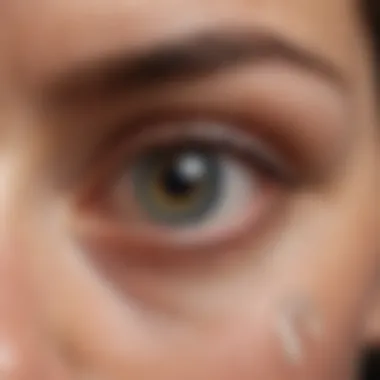
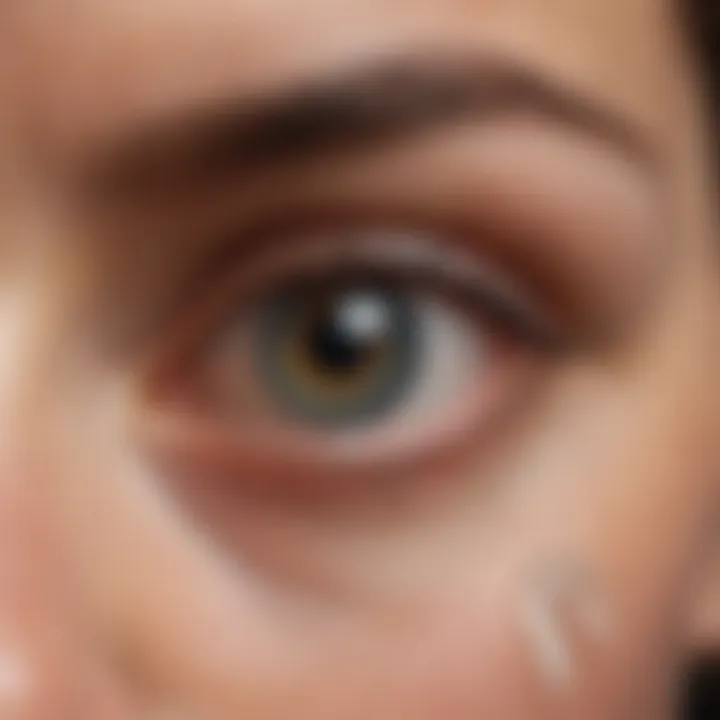
A deeper dive into case studies reveals diverse experiences among patients using eye drops aimed at dissolving cataracts. For instance, one patient, a 68-year-old retired teacher from Ohio, noticed significant improvements in her vision over a three-month period of consistent eye drop use. Describing her experience, she stated,
"Before these drops, reading was next to impossible. Now, I can see the words clearly, and it feels like I’ve got my life back."
This personal account resonates with numerous individuals seeking alternatives to surgery, underscoring the potential for these drops to make a difference in daily life. Yet, not all experiences are universally positive. Consider another case, where a young man in his early 50s faced some mild irritation upon using the drops. He clarified, "It worked for my vision but made my eyes a bit uncomfortable. It wasn’t unbearable, but I did have to take breaks."
Such stories highlight a significant aspect of patient narratives—the balance of benefits and side effects that individuals weigh when considering treatment options.
Community Feedback
Community feedback on eye drops that dissolve cataracts varies greatly. Online forums, such as Reddit and various Facebook groups, have become vital platforms where experiences are shared. Many community members express hopefulness about the drops, viewing them as a viable alternative to surgery. Others share skepticism, raising concerns regarding the longevity of benefits and possible complications. For instance, a discussion group might reveal thoughts like:
- "I’ve been using these drops for a month now, and my optometrist noticed slight improvement.”
- “I’m worried that they are just a temporary fix, and I’d hate to rely on something that won’t last.”
This feedback emphasizes the importance of ongoing research and communication in eye care. While patients are optimistic, they are also pragmatic, wanting reassurance regarding the safety and effectiveness of these eye drops. As these conversations unfold, they contribute to a larger narrative influencing doctors and healthcare policy—aligning patient expectations with emerging treatments and guiding future research.
In summary, patient perspectives and testimonials are crucial not just for understanding the potential efficacy of eye drops aimed at cataracts, but also for guiding ongoing innovation in treatment. This two-way dialogue between patients and providers is essential for shaping future approaches to ocular health, confirming that even as science advances, the voices of those experiencing these developments remain a priority.
Regulatory Status and Approvals
Understanding the regulatory status and approvals surrounding eye drops aimed at dissolving cataracts is crucial for multiple reasons. First and foremost, these regulations ensure that any treatment reaching the market is supported by substantial scientific evidence illustrating its efficacy and safety. For novel treatments, especially those dealing with critical conditions such as cataracts, navigating the regulatory landscape becomes even more essential, as it not only influences patient trust but also impacts healthcare practices globally.
The environment in which these eye drops are being developed and tested is shaped by numerous entities, including governmental agencies and independent organizations. Their focus is often on ensuring that the innovative eye drops go through rigorous testing phases and clinical trials to affirm their proposed benefits.
Current Regulatory Framework
In many countries, the current regulatory framework dictates that any new eye drop formulation must undergo a series of evaluations prior to approval. In the United States, for example, the Food and Drug Administration (FDA) is the key player. It requires comprehensive data from Phase I to Phase III clinical trials, scrutinizing aspects such as:
- Safety: Determining possible adverse effects and side effects associated with the drug.
- Efficacy: Establishing if the eye drops can effectively dissolve cataracts as claimed.
- Manufacturing practices: Verifying that the production of these eye drops meets defined quality controls.
Failing to meet these standards can delay a product's entry to market or result in rejection altogether. For professionals involved in ophthalmology, this regulatory pathway is critical as it can dictate not just timelines but also availability of potentially transformative treatments.
Future Regulatory Considerations
As the landscape of ophthalmic treatment continues to evolve, future regulatory considerations will likely center around several fundamental aspects:
- Adaptive Trial Designs: Regulatory bodies may begin to embrace more flexible clinical trial designs that could accelerate the process.
- Real-World Evidence (RWE): There's an ongoing push for the inclusion of real-world evidence in regulatory submissions, which can shed light on how these eye drops perform in everyday settings versus strictly controlled trial environments.
- Global Standards: Harmonizing regulations internationally could streamline the approval process, enabling quicker access for patients worldwide.
Overall, the focus will likely remain on maintaining patient safety while encouraging innovation. As these eye drops represent a leap forward for cataract treatments, their regulatory status will shape not just their acceptance but ultimately their success in clinical practice.
"The regulatory framework serves as a shield and a sword; it protects patients but also paves the way for innovation."
The way forward will hinge on navigating these requirements effectively, ensuring that any new developments in eye drops for cataracts are both safe and impactful.
Future Implications for Eye Care
As we stand at the crossroads of innovation in ophthalmology, the potential of eye drops that dissolve cataracts presents a turning point in eye care. The shift from traditional surgical methods to non-invasive solutions could radically alter how we approach cataract treatment. This transformation holds not just importance for patients, but for healthcare systems globally.
Shifts in Treatment Paradigms
The introduction of dissolving eye drops marks a significant departure from the standard surgical paradigm. Patients have long relied on cataract surgery as the go-to option for lens clarity. But consider this: if effective eye drops could restore vision without surgery, the implications become profound. Patients may avoid not just the procedure—but also the inherent risks associated with surgery, like infections and complications.
Additionally, these drops could serve as preventive measures, potentially delaying or even preventing the onset of cataracts in susceptible populations. Here’s why that’s compelling:
- Accessibility: Eye drops would likely be easier to access than surgical interventions, making treatment available to a broader audience.
- Cost-Effectiveness: Patients could save on surgical costs, postoperative care, and transportation to facilities equipped for surgery.
- Patient Empowerment: Self-administered treatments foster empowerment, reducing anxiety associated with surgical procedures.
As this research progresses, we might see a complete shift in how healthcare providers perceive and treat cataracts. With eye drops transforming the treatment landscape, it’s crucial to rethink how we train medical professionals and equip them to handle these new modalities, focusing on more holistic care approaches.
Long-Term Vision Health Strategies
Let’s delve deeper into how these advancements can shape long-term strategies for vision health. Having effective non-invasive treatments for cataracts isn’t just about addressing an immediate issue; it’s about enhancing overall eye health for future generations.
- Public Health Initiatives: By integrating these drops into routine eye care, public health campaigns could focus on cataract prevention and education, crucial for populations at risk.
- Monitoring and Research: Long-term studies into the efficacy of these eye drops can help inform best practices and treatment protocols that maximize patient benefit.
- Technology Synergy: Future development may pair these drops with advancements in telemedicine, allowing eye care specialists to remotely monitor patient progress and adjust treatments as necessary.
- Community Awareness: As new treatment alternatives arise, building community awareness will ensure patients are informed about their options. This can reduce stigma surrounding cataract diagnosis and foster a culture of proactive eye health management.
In summary, the implications of these eye drops extend beyond mere treatment. They challenge us to reconsider our understanding of vision health and lay the foundation for more holistic approaches in eye care. As studies unfold, keeping an eye on these developments could lead to a brighter vision for many.
Ending
The concluding section serves as a vital summary of the key points discussed regarding eye drops that dissolve cataracts. In evaluating this emerging treatment, it becomes essential to understand the significant strides made in the research and development of eye drops as a potential alternative to traditional surgical methods. Eye drops for cataracts could revolutionize how these vision impairments are treated, offering a less invasive option that may not only reduce recovery times but also lessen overall healthcare costs.
An important aspect to consider includes the biological mechanisms that these drops utilize to reverse cataract formation. The research elucidates how specific ingredients work harmoniously to emulsify lens proteins, potentially restoring clarity to sight. This advancement in ocular therapeutics could shift perceptions around cataract treatment paradigms, providing hope for those who wish to avoid surgery.
Summary of Key Findings
The exploration of eye drops designed for cataracts reveals several pivotal findings:
- Mechanisms of Action: The eye drops leverage innovative chemical processes to target and dissolve cataract-forming proteins within the lens.
- Clinical Trials: Studies indicate promising results, with significant improvements in lens clarity observed in test subjects.
- Patient Perspectives: Anecdotal feedback from early users suggests increased satisfaction, as many prefer a non-surgical route.
- Cost-Effectiveness: Compared to conventional surgical options, eye drops could prove to be a more affordable long-term solution for managing cataracts.
Overall, the combination of scientific exploration and positive patient outcomes points to a future where eye drops are a mainstream treatment.
Final Thoughts on Eye Drops for Cataracts
As the curtain falls on this discussion, it's clear that eye drops for cataracts are not merely a far-fetched fantasy. They represent a crossroads in the field of ophthalmology. The potential for these treatments to radically change how we approach cataract management cannot be overstated. Nevertheless, while optimism is warranted, one must remain grounded. Ongoing research must clarify the long-term efficacy and safety of these drops.
The journey from lab discovery to patient application is fraught with challenges, but the horizon appears bright. As we delve into future inquiries and analyses, it will be crucial to stay informed about evolving findings. Everyone— from students and researchers to healthcare professionals— should monitor this exciting domain in eye care, as eye drops may soon serve as a viable alternative to surgery.



